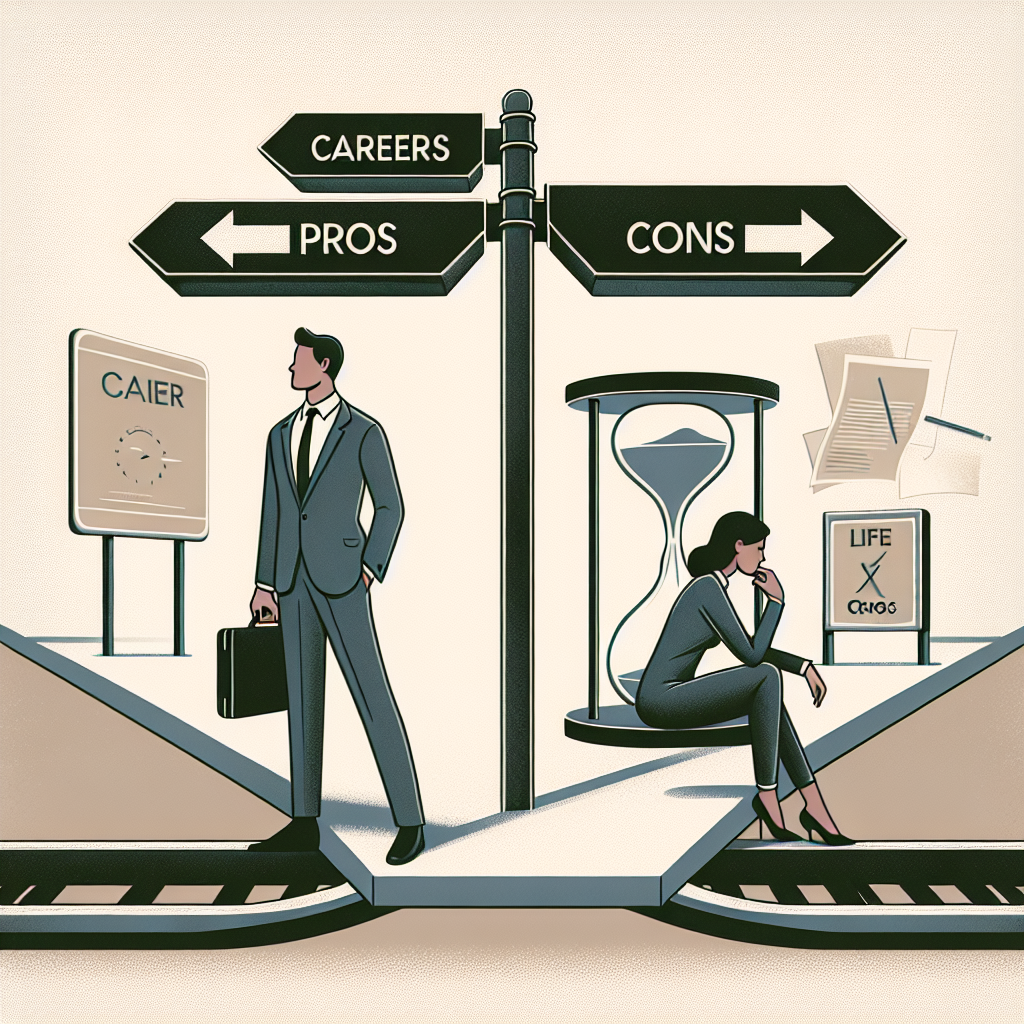Deciding to switch lanes professionally can be exciting and intimidating at the same time. Great New Careers: Pros and Cons Explained provides a framework to evaluate opportunities, risks, and realistic next steps so you can choose a path that fits your skills, values, and life stage. This overview helps you weigh benefits like higher satisfaction or flexibility against drawbacks such as income volatility or training time.
Pros and Cons of Great New Career Choices
When considering a career pivot, it helps to break choices down into tangible advantages and disadvantages. New careers can offer personal growth, improved work-life balance, and the chance to work in emerging fields. On the other hand, they may require upfront investment in education, temporary pay reductions, or adjustment to different workplace cultures.
Common Advantages
- Renewed motivation and job satisfaction from work that aligns with your interests or values.
- Access to faster-growing industries with better long-term prospects.
- Opportunities for flexible schedules, remote work, or freelance arrangements.
- Room to leverage transferable skills—communication, project management, and leadership—across sectors.
Typical Drawbacks
- Time and money spent on retraining, certifications, or degree programs.
- Short-term income loss or starting at a lower rung on the pay scale.
- Potential age or experience bias in certain hiring markets.
- Uncertainty during the transition period and the emotional stress of change.
How to Evaluate Whether a New Path Fits
Start by conducting a realistic skills inventory—identify what you’re excellent at, what you enjoy, and what gaps need closing. Research demand and salary ranges for roles you’re considering. For reliable labor-market data and occupational outlooks, consult the U.S. Bureau of Labor Statistics Occupational Outlook Handbook, which provides projections, typical entry paths, and wage information for hundreds of occupations.
Also consider lifestyle impacts. A career that pays more but requires long commutes or extensive travel may not be genuinely “better” if it undermines your priorities. Build a shortlist of roles, talk to people in those jobs, and try side projects or part-time work if possible to test fit without fully committing.
Practical Steps to Make a Smooth Transition
- Map transferable skills and match them to job descriptions; highlight relevant accomplishments in your résumé.
- Pursue targeted learning—microcredentials, night classes, bootcamps, or professional certifications—that close specific skill gaps.
- Network intentionally: informational interviews, industry meetups, and online communities reveal unadvertised openings and realistic expectations.
- Create a financial buffer if you expect reduced earnings during the transition; consider freelancing or part-time work to bridge the gap.
- Test options through volunteering, shadowing, or short-term contracts to reduce the risk of a full leap.
Women contemplating career change later in life can find resources tailored to their needs; for example, a focused resource on starting fresh new career paths for women at 50 outlines strategies, training options, and inspirational case studies that may be especially relevant when balancing work with other life responsibilities.
Red Flags to Watch For
A few warning signs suggest a role might not be a good long-term fit: lack of growth opportunities, unusually high turnover, opaque compensation structures, or job requirements that consistently change in unrealistic ways. If several red flags show up during talks or interviews, dig deeper or consider alternatives rather than accepting a hurried offer.
Balancing Passion with Practicality
Pursuing a passion is admirable, but sustainable career change blends enthusiasm with credible income potential. Consider hybrid approaches—keeping a steady role while developing the new career on evenings and weekends—until the new path reaches viable momentum.
Quick Pros and Cons Summary
- Pros: personal fulfillment, better alignment with values, growth sectors, flexible arrangements.
- Cons: training time and cost, temporary earnings loss, uncertainty, and possible bias in hiring.
FAQ
Q: How do I decide if a career change is the right move now?
A: Evaluate urgency versus preparation: if current work harms your wellbeing, a faster change may be justified. Otherwise, plan a phased transition—research, skill-building, and testing—before fully committing.
Q: What are realistic first steps for someone retraining mid-career?
A: Start with a skills audit, identify short courses or certifications that employers value, and pursue networking to find entry points. Consider apprenticeships, part-time study, or online programs that let you earn while you learn.
Q: Where can I find dependable labor market information?
A: Government and educational resources provide unbiased data; the BLS Occupational Outlook Handbook is a dependable place to compare job growth projections, required education, and median pay for different occupations.



